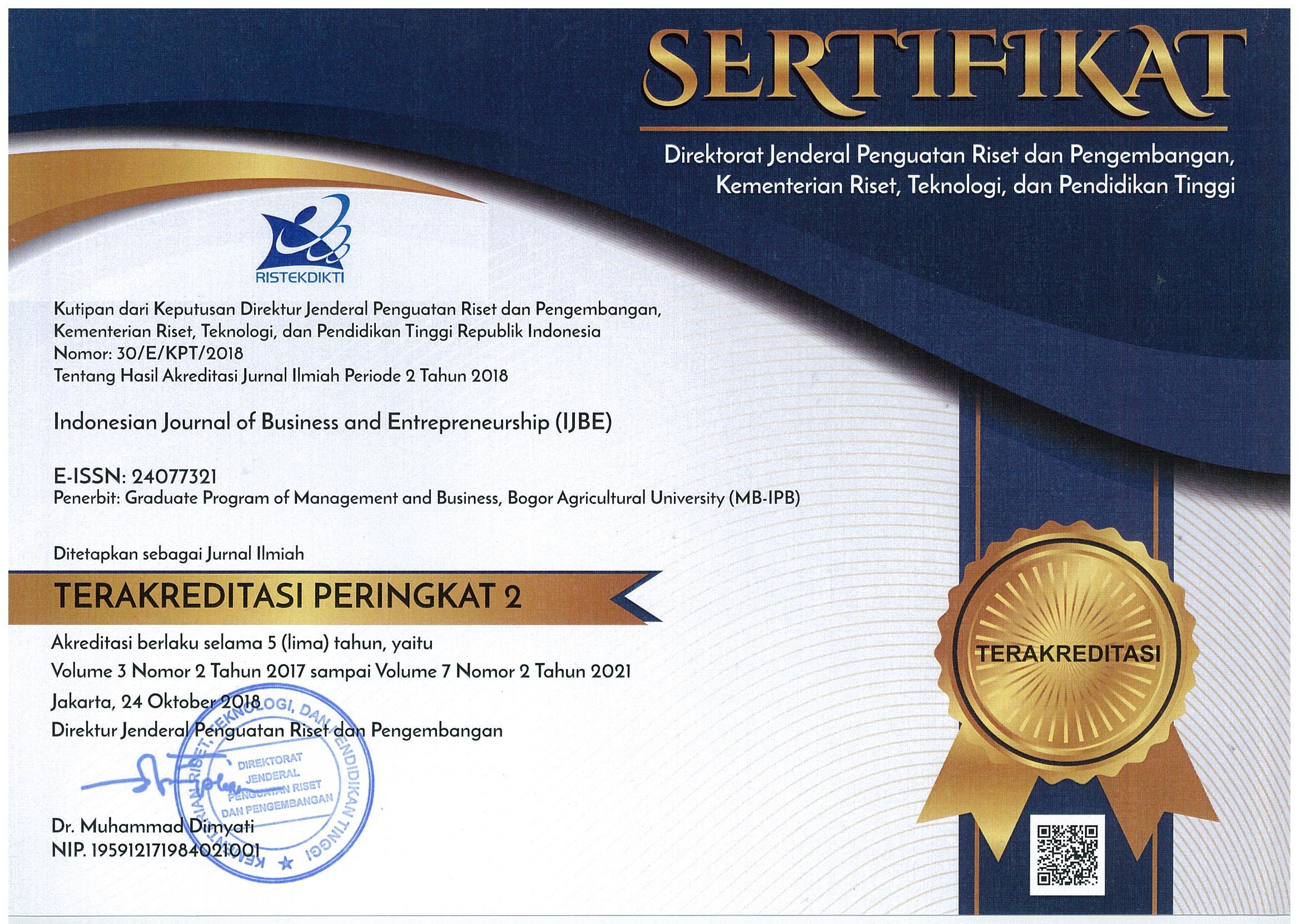The Efficiency of Manufacturing Sector: Empirical Evidence From Aceh Province Indonesia
Abstract
This paper was aimed to analyze the efficiency of Manufacturing Sector in Province of Aceh – Indonesia. The analysis was conducted using the secondary data on manufacturing sector of Province of Aceh together with the Data Envelopment Analysis (DEA analysis). Based on the research, it was found that the manufacturers that had highest output included those producing Fertilizer, Chemical, and Rubber whereas the manufacturers that had the lowest output included Foods and Tobaccos. This condition was caused by the lower interest of the producers involving in foods and tobaccos products. By using DEA analysis, the efficiency value of each product is varied. Using constant return to scale (CRS) assumption, there are four manufactures that are not efficient, including Foods and Tobaccos, Textile, Animal skin products and shoes, and Fertilizer, Chemical, and Rubber products.
Keywords: efficiency, manufacturing sector, data envelopment analysis
Downloads
References
Adugna T. 2014. Impacts of manufacturing sector on economic growth in Ethiopia: akaldorian approach. Journal of Business Economics and Management Sciences 1(1): 1–8.
Akbar RA. 2010. Analysis of efficiency in Baitul Mal Wa Tamwil using DEA [tesis]. Semarang: University of Dipenogoro.
Banaeian N, Morteza Z. 2011. Study on energy efficiency in corn production of Iran. Energy 36(8): 5394–5402. https://doi.org/10.1016/j.energy.2011.06.052.
Cesaroni G. 2017. Industry cost efficiency in data envelopment analysis. Socio-Economic Planning Sciences 61:37–43. https://doi.org/10.1016/j.seps.2017.01.001.
Chen L, Guozhu J. 2017. Environmental efficiency analysis of China’s regional industry: a data envelopment analysis (DEA) based approach. Journal of Cleaner Production 141(2017): 846–853. https://doi.org/10.1016/j.jclepro.2016.01.045.
Coelli TJ, Rao DSP, Battese GE. 1998. An Introduction to Efficiency and Productivity Analysis. Boston: Kluwer Academic Publisher. https://doi.org/10.1007/978-1-4615-5493-6.
Liu S, Pingyu Z, Xiuli H, Jing L. 2015. Efficiency change in North-East China agricultural sector: a DEA approach. Agricultural Economics (Zemědělská Ekonomika) 61(11): 522–532. https://doi.org/10.17221/233/2014-AGRICECON.
Mandal SK, Madheswaran S. 2009. Environmental efficiency of the Indian cement industry: An interstate analysis. Energy Policy 38(2):1108–1118.https://doi.org/10.1016/j.enpol.2009.10.063.
Mardani A, Edmundas KZ, Dalia S, Ahmad J, Masoumeh K. 2017. A comprehensive review of data envelopment analysis (DEA) approach in energy efficiency. Renewable and Sustainable Energy Reviews 70(2017): 1298–1322. https://doi.org/10.1016/j.rser.2016.12.030.
Olesen OB, Niels CP, Victor VP. 2017. Efficiency measures and computational approach for data envelopment analysis models with ratio inputs and ouputs. European Journal of Operational Research 261(2017): 640–655. https://doi.org/10.1016/j.ejor.2017.02.021.
Prasetyo D. 2010. Analysis of technical and allocative efficiency in Tawangmangu Tourism Region in Kabupaten Karanganyar using DEA method [thesis].Solo: University of Sebelas Maret.
Rajasekar T, Deo M. 2014. Is there any efficiency difference between input and output oriented DEA Models: An approach to major ports in India. Journal of Business and Economic Policy 1(2): 18–28.
Rao DS, Prasada, Timothy J. Coelli, Mohammad A. 2004. Agricultural productivity growth, employment and poverty in developing countries, 1970-2000. Employment Strategy Paper 2004/9.
Syahran R, Dedi BH, Dadang S.2016.The evaluation on the financial performance of paper and pulp companies in Indonesia. Indonesian Journal of Business and Entrepreneurship 2(3):187–196. https://doi.org/10.17358/IJBE.2.3.187.
Tambunan. 2001. Perekonomian Indonesia. Jakarta:Ghalia Indonesia.
Tanase, Ionela, Adriana T. 2012. Efficiency Progress and Productivity Change in Romania Machinery Industry 2001-2010. Procedia Economics and Finance 3 (2012): 1055–1062. https://doi.org/10.1016/S2212-5671(12)00273-0.
Vincent G. 1999. Ekonomi Manajerial Pembuatan Keputusan Bisnis. Jakarta: Gramedia Pustaka Utama.
Yannick GZS, Zhao H, Belinga T. 2016. Technical efficiency assessment using data envelopment analysis: an application to the banking sector of Cote d’Ivoire. Procedia-Social and Behavioral Sciences 235(2016): 198-207. https://doi.org/10.1016/j.sbspro.2016.11.015.
Wu J, Qingxian A, Xin Y. 2014. Environmental efficiency evaluation of industry in China based on a new fixed sum undesirable output data envelopment analysis. Jounal of Cleaner Production 74(2014): 96–104. https://doi.org/10.1016/j.jclepro.2014.03.054.
Wu Y, Yong H, Xinli X, Chunyu M. 2016. Efficiency assessment of wind farms in China using two-stage data envelopment analysis. Energy Conversion and Management Journal 123(2016): 46–55. https://doi.org/10.1016/j.enconman.2016.06.014.
Zheng Q, Boqiang L. 2017. Industrial policies and improved energy efficiency in China’s paper industry. Journal of Cleaner Production 161(2017): 200–210. https://doi.org/10.1016/j.jclepro.2017.05.025.
Zhu J. 2003. Quantitative Models for Performance Evaluation and Benchmarking, Data Envelopment Analysis with Spreadsheets and DEA Excel Solver. Massachusetts, USA: Worcester Polytechnic Institute.







